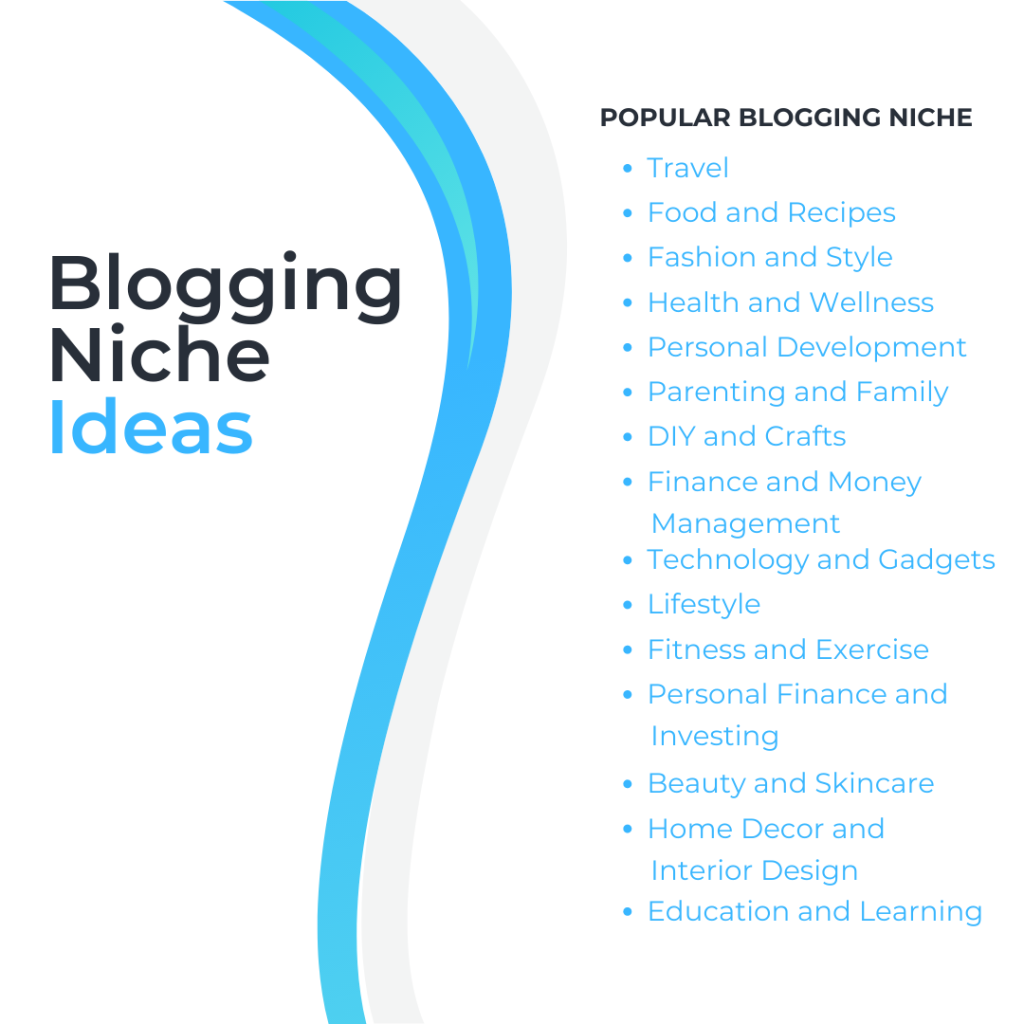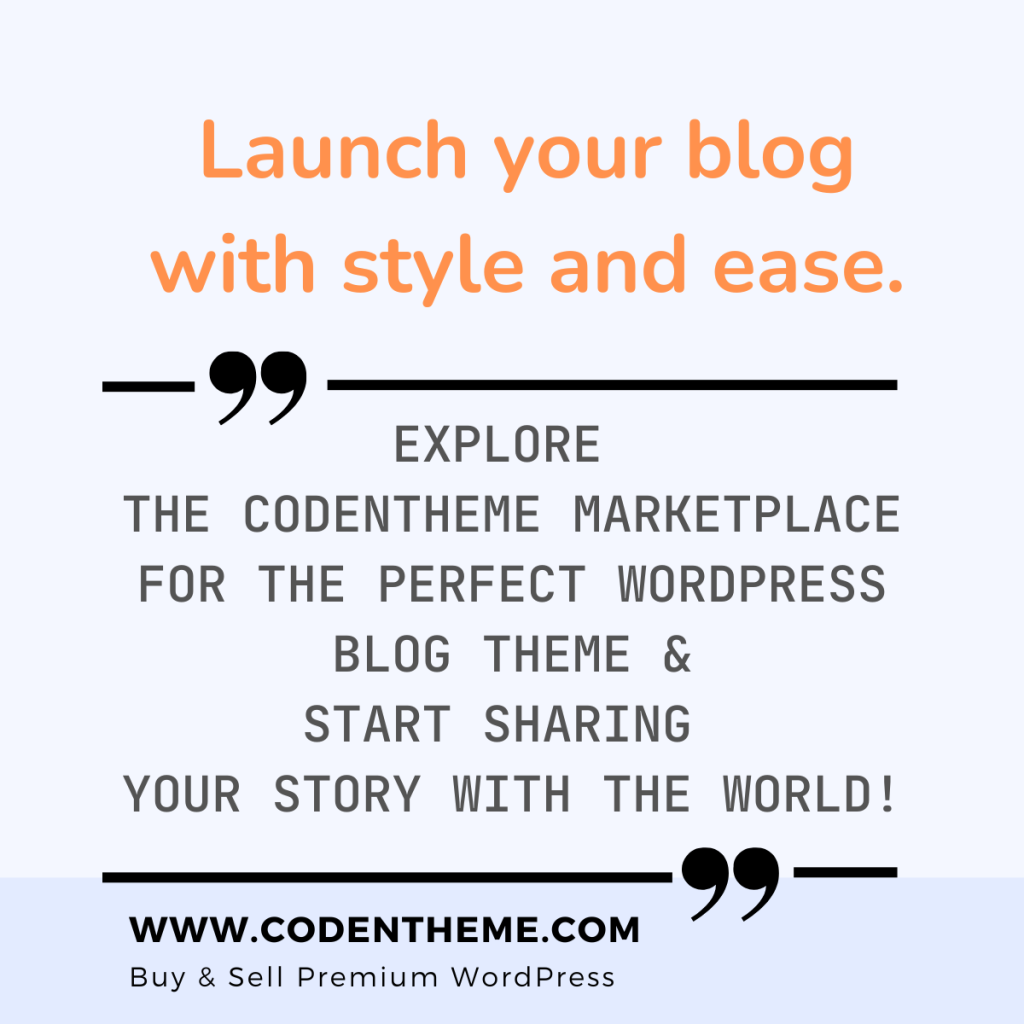How to Start a Blog: A Step-by-Step Guide for Beginners
Starting a blog has become increasingly popular in recent years. Because blogging can be a smart career move with many benefits. It allows individuals to share their thoughts, knowledge, and expertise with a wide audience. Also it can help you establish yourself as an authority in your niche.
Blogging benefits include establishing an online presence, building a personal brand, and connecting with like-minded people. Furthermore you can generate nice income through various monetization methods.
In this guide, we’ll explore how to start a blog from scratch and turn it into a money-making online platform.
Let’s start with.
Choose a Topic.
Defining your blogging niche is the first step to starting a blog. A niche refers to a specific area of interest or expertise that you will focus on in your blog. When choosing a blog topic, it’s important to consider your own passions, knowledge, and your potential audience. By selecting a niche that aligns with your expertise and interests, you can create content that is both enjoyable to produce and valuable to your readers.
Factors to consider when choosing a blog topic include:
- Passion: Select a topic you are genuinely passionate about, as it will motivate you to consistently create high-quality content.
- Expertise: Choose a topic you know well or are willing to research and learn more about.
- Market demand: Research if there is an audience for your chosen topic. Look for existing blogs, forums, or social media groups focused on similar subjects.
- Longevity: Consider the long-term sustainability of your chosen topic. Is it a passing trend or something that will remain relevant in the future?
15 Popular Blogging Niche Ideas to write about.
Check out the following blog niche ideas before starting a blog.

You will be able to learn how to specialize your content in some of the most popular blog niches. We’ve organized the following 15 main categories:
- Travel: Share your personal travel experiences, provide destination guides, travel tips, and advice for fellow travelers.
- Food and Recipes: Write about cooking techniques, share delicious recipes, restaurant reviews, and culinary experiences.
- Fashion and Style: Covers fashion trends, outfit inspiration, fashion tips, style guides, and beauty recommendations.
- Health and Wellness: Focus on topics like fitness routines, healthy eating, mental well-being, self-care practices, and natural remedies.
- Personal Development: Share self-improvement strategies, personal growth insights, goal-setting techniques, and motivation.
- Parenting and Family: Provide advice, tips, and resources for parents, including parenting tips, child development, family activities, and parenting hacks.
- DIY and Crafts: Share DIY projects, craft tutorials, home decor ideas, upcycling projects, and creative inspiration.
- Finance and Money Management: Offers financial advice, budgeting tips, money-saving strategies, investment insights, and personal finance education.
- Technology and Gadgets: Cover the latest tech news, gadget reviews, tutorials, and offer tech tips for everyday users.
- Lifestyle: Discusses a wide range of topics related to everyday life, such as relationships, personal experiences, hobbies, and general lifestyle advice.
- Fitness and Exercise: Focus on specific fitness routines, workout plans, exercise tips, nutrition advice, and fitness product reviews.
- Personal Finance and Investing: Sharing insights on investing strategies, money management, financial independence, retirement planning, and wealth building.
- Beauty and Skincare: Provide beauty tips, skincare routines, product reviews, makeup tutorials, and beauty product recommendations.
- Home Decor and Interior Design: Share interior design inspiration, home decor ideas, organizing tips, home improvement projects, and DIY hacks.
- Education and Learning: Offers educational resources, study tips, learning strategies, online course recommendations, and educational product reviews.
Choose a Platform.
There are several blogging platforms available. Each one has its own features and advantages. It is suggested that you use WordPress, Blogger, or Squarespace as among the most popular options. When selecting a platform, it’s important to consider factors such as ease of use, customization options, scalability, and cost.
A comparison of three blogging platforms may involve considering the following:
- WordPress: Known for its flexibility and extensive plugin options, WordPress is a popular choice for bloggers seeking customization and control.
- Blogger: Owned by Google, Blogger is user-friendly and offers a straightforward interface, making it ideal for beginners.
- Squarespace: Suitable for bloggers who prioritize aesthetics, Squarespace provides stylish templates and a seamless user experience.
Tips for selecting the best platform for your blog:
- Ease of use: Choose a platform that matches your technical skills and offers an intuitive interface.
- Customization: Consider the customization options available to personalize your blog’s design and layout.
- Scalability: If you plan to grow your blog over time, ensure the platform can accommodate your future needs.
- Support and community: Look for a platform that offers reliable customer support and an active user community.
Choose a Domain and Hosting.
To establish your blog’s online presence, you’ll need to purchase a domain name and select a hosting provider.
Steps to purchasing a domain name:
- Brainstorm domain names: Choose a domain name that is memorable, reflects your blog’s identity, and is easy to spell.
- Check domain availability: Use domain registration websites to check if your desired domain name is available.
- Register the domain: Once you find an available domain name, follow the registration process on a reputable domain registrar’s website.
- Set up DNS settings: Configure the domain’s DNS (Domain Name System) settings to connect it to your hosting provider.
Choosing the right hosting provider for your blog:
- Reliability and uptime: Select a hosting provider known for its reliable servers and high uptime percentage.
- Speed and performance: Look for hosting plans that offer fast loading times, as it impacts user experience and search engine rankings.
- Customer support: Opt for a hosting provider with responsive and knowledgeable customer support to address technical issues promptly.
- Scalability: Consider the hosting provider’s ability to handle increased traffic as your blog grows.
Design and Layout.
Your blog’s design and layout play an important role in attracting and engaging readers. A visually appealing and user-friendly blog layout can enhance the overall user experience and make it easier for visitors to navigate through your content.
Tips for creating an attractive and user-friendly blog layout:
- Choose a clean and responsive theme: Select a theme that complements your blog’s topic and provides a clean and responsive design across different devices.
- Use a readable font: Select a font that is easy to read and doesn’t strain the eyes. Stick to a limited number of font styles for consistency.
- Organize content with categories and tags: Use categories and tags to organize your blog posts, making it easier for readers to find related content.
- Include a search bar: Allow users to search for specific topics or keywords within your blog to improve navigation.
- Utilize white space: Avoid cluttering your blog with excessive elements. Use white space strategically to improve readability and give your content room to breathe.

Creating Quality Content.
Your blog’s success depends on its quality. High-quality content engages readers, provides value, and establishes you as an authority in your chosen niche.
Quality content means writing in-depth, valuable, and engaging posts that solve your readers' problems and add value to their lives.
Content tips for engaging your target audience:
- Know your audience: Research and understand your target audience’s needs, interests, and pain points. Take these aspects into account when creating your content.
- Provide valuable information: Offer unique insights, practical tips, or in-depth analysis that your readers can benefit from.
- Use a conversational tone: Write in a conversational and relatable manner to connect with your audience personally.
- Include multimedia: Incorporate visuals such as images, infographics, or videos to enhance your content’s visual appeal and engagement.
- Write compelling headlines: Craft attention-grabbing headlines that entice readers to click and explore your content further.
Growing Your Audience.
Increasing blog traffic and growing your audience is a continuous process that requires promotion and engagement. Here are some ways to increase your blog’s visibility:
- Search engine optimization (SEO): Optimize your content for search engines by incorporating relevant keywords, meta tags, and optimizing your website’s performance.
- Guest posting: Write guest posts for other established blogs in your niche to expand your reach and attract new readers.
- Social media promotion: Share your blog posts on social media platforms relevant to your target audience. Engage with your followers and join relevant communities or groups to build connections.
- Email marketing: Build an email list and send regular newsletters or updates to your subscribers, offering exclusive content or promotions.
- Collaborations and networking: Collaborate with other bloggers, influencers, or industry experts to cross-promote each other’s content and tap into their audiences.
Monetizing Your Blog.
Once you have established a loyal audience, you can explore various methods to monetize your blog:
- Affiliate marketing: Promote products or services through affiliate links and earn a commission for every purchase made through your referral.
- Display advertising: Join advertising networks such as Google AdSense to display relevant ads on your blog and earn revenue based on clicks or impressions.
- Sponsored content: Collaborate with brands or businesses to create sponsored content where you promote their products or services in exchange for payment.
- Digital products: Create and sell your own digital products such as e-books, online courses, or exclusive content for your audience.
- Consulting or services: Leverage your expertise and offer consulting services, coaching, or other services related to your niche.
Conclusion.
Starting a blog can be a rewarding and fulfilling career choice. By following the steps outlined in this guide, you can establish a successful blog that establishes a readership, generates income, and allows you to share your knowledge and passion with the world.
Remember, consistency, quality content, and continuous promotion are key to building and growing your blog over time. Good luck and happy blogging!
